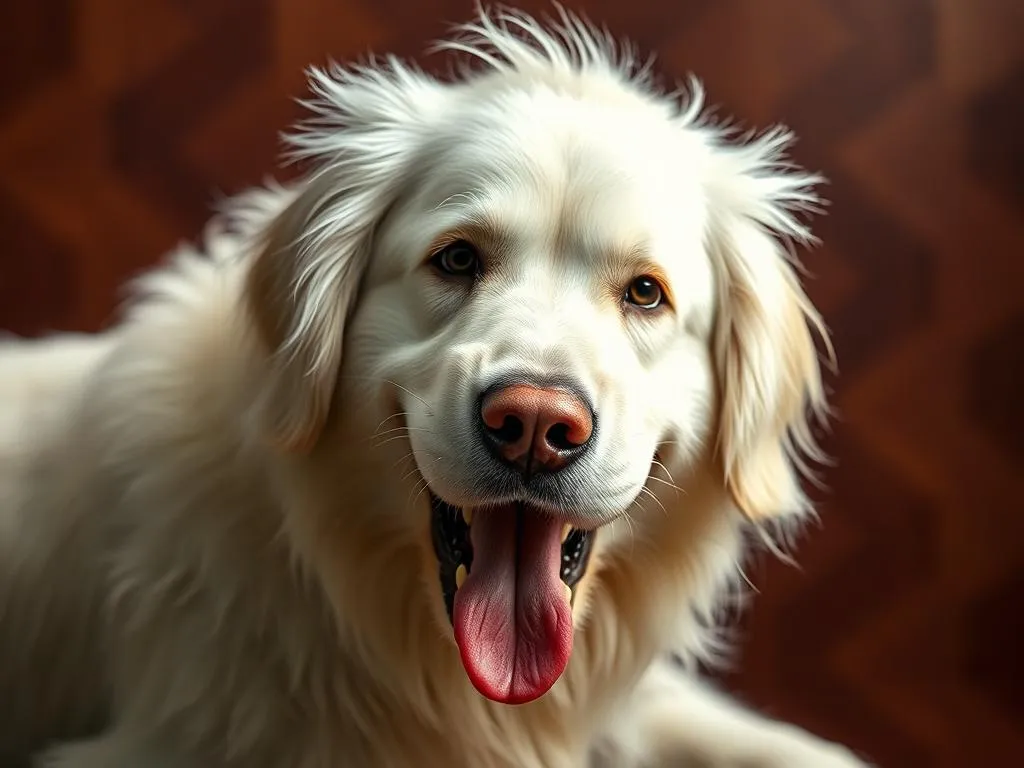
Understanding the temperament and behavior of dog breeds is crucial for potential owners. The Great Pyrenees, a majestic breed known for its stunning white coat and gentle demeanor, often raises questions about its temperament. Many people wonder, are Great Pyrenees aggressive? This article aims to dispel myths and clarify the breed’s behavior, providing insights into their nature.
Understanding Great Pyrenees
History and Origin
The Great Pyrenees has a rich history, originating in the mountainous regions of France and Spain. These dogs were primarily bred as livestock guardians, tasked with protecting sheep from predators. Their natural instincts and protective nature made them indispensable to shepherds, who relied on them to keep their flocks safe. As a result, Great Pyrenees became well-regarded in various cultures for their loyalty and strength.
Physical Characteristics
The Great Pyrenees is a large, powerful breed, typically weighing between 85 to 115 pounds. They stand about 25 to 32 inches tall at the shoulder. Their most distinctive feature is their thick, white coat, which can sometimes have shades of gray or tan. Unlike some other breeds, their coat is designed to withstand harsh weather, allowing them to thrive in the mountainous regions where they were originally bred.
When compared to other large breeds, such as the Bernese Mountain Dog or the Alaskan Malamute, Great Pyrenees dogs maintain a more regal appearance with their elegant stature and flowing coat.
Temperament Overview
Great Pyrenees are known for their affectionate and loyal nature. They often form strong bonds with their families, displaying a calm demeanor and a gentle disposition. However, their instincts as guardians are deeply ingrained. This breed is naturally protective, which can sometimes be misconstrued as aggression. Understanding these traits is essential for potential owners.
Aggression in Dogs: A General Overview
Defining Aggression
Aggression in dogs can manifest in various forms, including fear-based, territorial, and protective aggression. Recognizing the signs of aggression is crucial for responsible ownership. Common signs include growling, barking, showing teeth, and a stiff body posture. Understanding the nuance of aggression is vital, as not all aggressive behavior stems from a desire to harm.
Factors Influencing Aggression
Several factors can influence a dog’s aggressive behavior, including genetics, environment, upbringing, and socialization. While certain breeds may have tendencies towards aggression, individual temperament can vary greatly. A dog’s upbringing, how it is raised, and its experiences with other animals and humans can significantly impact its behavior.
Are Great Pyrenees Aggressive?
General Behavior Patterns
Great Pyrenees are known for their protective instincts. This breed tends to be wary of strangers, which is a natural trait developed from their history as guardians. However, this does not mean that they are inherently aggressive. They often assess a situation before reacting. Their interactions with other animals and humans can vary depending on their socialization and experiences.
Misconceptions About Aggression
There are many misconceptions about Great Pyrenees and aggression. One common myth is that they are always aggressive due to their protective nature. In reality, their behavior can be misinterpreted. For instance, when they bark or stand their ground, they are often merely alerting to potential threats rather than displaying aggression. Understanding the difference between protective and aggressive behavior is key.
Situations That May Trigger Aggression
Certain situations may trigger aggression in Great Pyrenees. For instance, if they perceive a threat to their family or territory, they may react defensively. Similarly, if they are not properly socialized, they may become anxious or fearful around unfamiliar people or animals, leading to aggressive reactions. It’s essential for owners to understand these contexts to prevent misunderstandings.
Socialization and Training
Importance of Early Socialization
Early socialization is critical for Great Pyrenees. Ideally, socialization should begin when they are puppies, typically around 8 to 16 weeks old. Exposing them to various environments, people, and other animals can help them develop a well-rounded temperament. Positive experiences during this critical period can significantly reduce the likelihood of aggressive behaviors later in life.
Training Techniques to Mitigate Aggression
Training is essential for managing any potential aggressive tendencies in Great Pyrenees. Positive reinforcement methods, such as treats and praise, can be effective. Owners should focus on basic commands like “sit,” “stay,” and “come,” which can help establish control and promote good behavior. Additionally, consistent training exercises can help reinforce desirable behaviors and alleviate any anxiety or fear that may lead to aggression.
Professional Help
In some cases, seeking help from a professional trainer or canine behaviorist may be necessary. If a Great Pyrenees shows signs of aggression that are difficult to manage, professional guidance can provide tailored strategies for training and socialization. Resources and organizations specializing in dog behavior can offer support and assistance for both new and experienced owners.
Living with a Great Pyrenees
Ideal Living Conditions
Great Pyrenees thrive in environments where they have ample space to roam and explore. They do best in homes with large yards or rural settings where they can exercise and engage their natural instincts. Regular physical activity is essential to keep them mentally and physically stimulated, which helps prevent behavior issues.
Family Dynamics
Great Pyrenees are generally good with children and can be gentle giants. They are known for their patience and affection towards family members. However, supervision is essential, especially with younger children. When introducing a Great Pyrenees to other pets, gradual introductions and monitoring interactions can help ensure a harmonious household.
Ongoing Care and Management
Routine care is vital for the well-being of Great Pyrenees. Regular grooming is necessary to manage their thick coat and prevent matting. Additionally, maintaining a consistent training and socialization routine can help address any behavior issues before they escalate. Providing mental stimulation through toys and training exercises can also contribute to a well-adjusted dog.
Conclusion
Understanding the temperament of Great Pyrenees is essential for potential owners. While they possess natural protective instincts, they are not inherently aggressive. Through proper socialization, training, and care, Great Pyrenees can thrive as loving companions. Responsible ownership and a deep understanding of the breed will foster a positive relationship between the dog and its family.
FAQs
Are Great Pyrenees good with children?
Yes, Great Pyrenees are generally good with children. They are known for their gentle nature and patience, making them excellent family pets when properly socialized.
How can I tell if my Great Pyrenees is being aggressive?
Signs of aggression may include growling, barking, stiff body posture, or showing teeth. It’s essential to assess the context of the behavior, as it may stem from protective instincts rather than a desire to harm.
Can Great Pyrenees be trained to reduce aggression?
Yes, with consistent training and positive reinforcement, Great Pyrenees can learn to manage aggressive tendencies. Early socialization and obedience training are crucial for developing a well-rounded temperament.
What should I do if my Great Pyrenees shows signs of aggression?
If your Great Pyrenees displays aggression, it’s important to assess the situation and remove them from the triggering environment. Consulting with a professional trainer or behaviorist can provide personalized strategies to address the behavior.
By understanding the nature of Great Pyrenees, potential owners can make informed decisions and enjoy a harmonious relationship with their canine companions.









